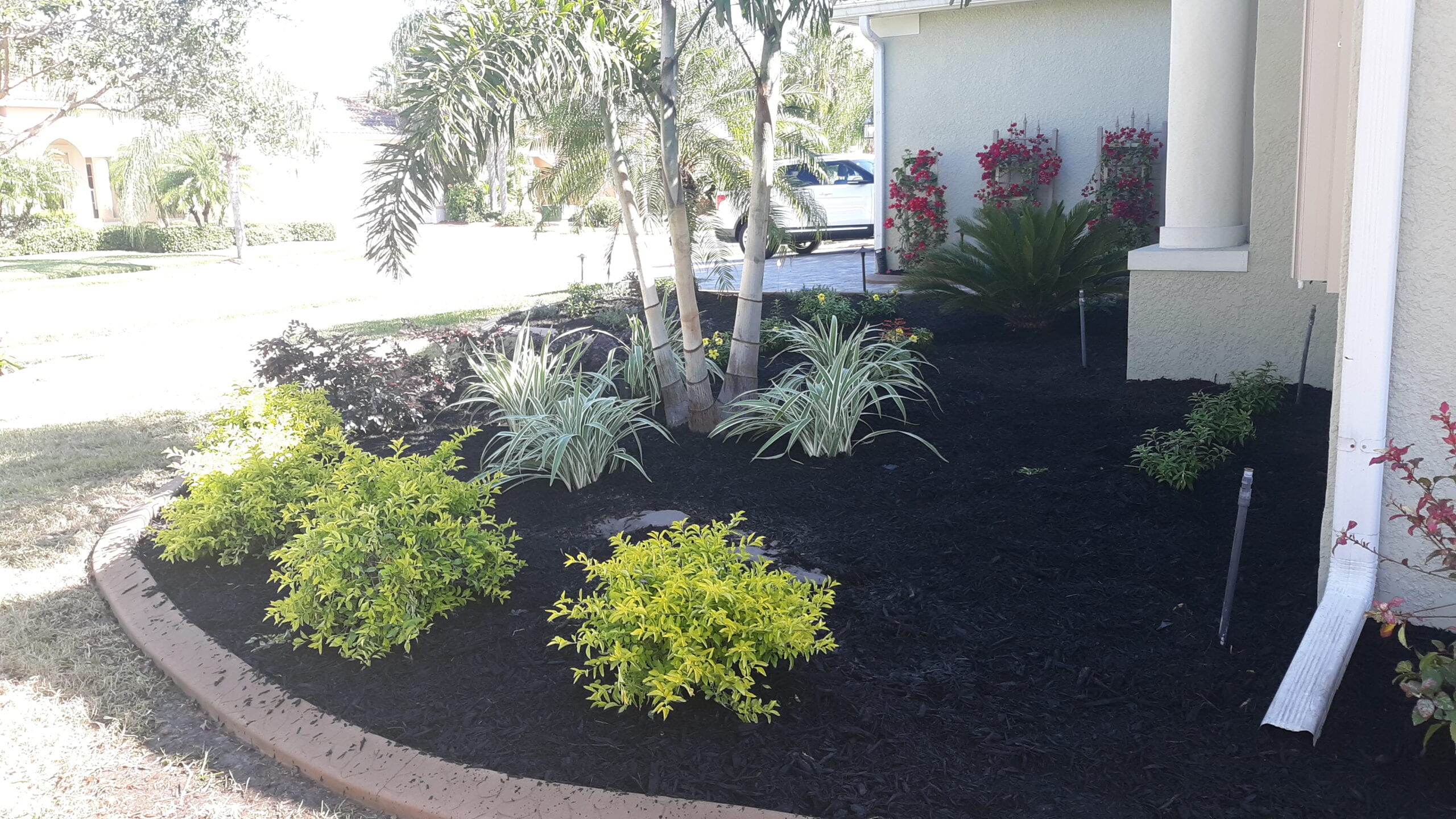Planting Instructions: Your South Florida Plant Guide
Location can be a big part of determining the success of your plantings. Make sure you put the right plant in the right place. Shade loving plants will not survive in direct sun. Most flowering plants will not survive in the shade.
When it comes to Florida plants, there are a quite a few things to keep in mind in order to make them flourish. That’s why I’ve put together this simple South Florida Plant guide!

Plant Guide:
Prepare a Planting: Dig a hole twice as wide and the same depth of the container that the plants come in. Place the plant in the hole and be sure that the top of the root ball is level or slightly above the surrounding ground. If you plant too deep… it could die slowly over time.
Remove the Container: Carefully remove the container by holding the top of the root ball and gently slide the plant out. If the roots have circled the plant or the root ball is solid roots gently squeeze the root ball prior to planting. Be careful not to disturb the roots too much or the plant will go into shock. Roots that have circled more than one time will need to be cut.
Fill the Hole: Fill the hole with the planting mix and plant, packing the soil lightly to remove any air pockets. Soak the soil thoroughly. It is a good idea to put some Milorganite, Fertrell or any other organic fertilizer of your choice in the mix as you fill the sides.
Note: Do not put chemical fertilizer in the hole. This will kill the plant. Wait 6 weeks.
Mulching: Be careful not to put mulch, stone or anything else within 6 inches of the trunk. Each plant has small air roots that need to breathe. Covering them can cause fungus problems and death of the plants.
Fertilizing and Feeding: We recommend to use Milorganite, Fertrell, or any other organic fertilizer of your choice while the plant is being planted. Milorganite is a non burning form of Nitrogen. However, it is not strong enough for periodic use, and it lacks the minor elements all plants require.
Florida soils are very sandy and have little to no nutrients. To be successful you must fertilize your new plants, starting 6 weeks after installation, and a minimum of 4 times per year. The general rule of thumb is ½ lb. per trunk diameter inch measured from about 3 inches above the ground. Scatter the fertilizer around the dripline of a plant, like salting a steak. Do not pour it in the crown of the plant or mound it around the trunk. Use fertilizers for specific plants, i.e.,
Palm fertilizers for Palms, Citrus fertilizer for Citrus etc.. These have the micro nutrients that are lacking in our soils and are needed to keep each type of plant healthy.
Watering: New plants need plenty of water. Follow this schedule to help develop a strong root system:
- Water daily for the first week. Water every other day the second week. Water twice a week the third-week. This is an approximate watering schedule.
- Water less if it rains and less during the winter.
- After the third week, water weekly unless we are in a very dry and hot month. Usually May, June and September.
- Always water in the morning. Plants only need water when the sun is up. If you wait until the plants are wilting, they won’t grow as well.
- Shaded plants will not need to be watered as much as plants that are in full sun.
- It is best to water plants with a hose because they need a nice deep soaking. It is best to take the squirter off of the hose.
- Hanging baskets and container gardens need to be checked daily. Only water when soil is on the dry side. They will require more water than a plant in the ground.
3 NO’s To Be Aware of With South Florida Plants:
- Plants that are planted too deep. All plants and trees need to be planted equal or a little above the surrounded ground. Plants too deep causes the plants to suffocate.
- Putting a “chemical” fertilizer in the hole. If you have ever put your hand in a bag of fertilizer and it caused a burning sensation, that is from the chemicals in the mix. When plants are first planted, they put out new little feeder roots. If you put a straight fertilizer in the hole it will burn the new roots and kill the plant.
- Air pockets underground. New plants need to be thoroughly watered. Try to get all air pockets out of the hole. If you do not fill the plant area with dirt and saturate the soil with water to get the air pockets out, the plants will die. It is best to put a ring of dirt around the plant or tree and fill it with water. While full, gently shake the plant to get the air pockets out.
For online help
University Florida – Department of Agriculture
